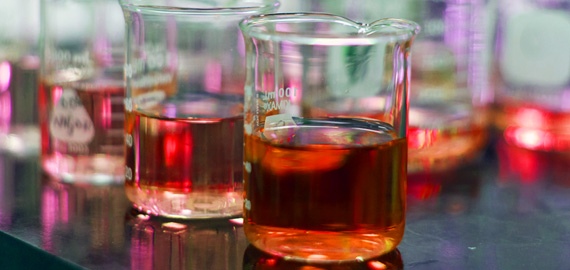
Written By: Gloria Tsang, RD
Title: Founding Registered Dietitian
Alumni: University of British Columbia
Last Updated on:

Something in soda may pose a health risk, and this time it’s not sugar. A coloring additive, caramel, has been the center of attention for two years by now. 4-methylimidazole is formed when caramel coloring is made. 4-methylimidazole is a known carcinogen in animal studies, and “possibly carcinogenic” to humans, according to WHO’s International Agency for Research on Cancer.
The state of California shares the same view. In fact, the state requires foods to carry a cancer warning label if a product contains more than 29 mcg of 4-methylimidazole per day.

Table of Contents
Earlier this year, Consumer Reports found that 2 out of 12 sodas exceeded the levels permitted. For those 2 products, Pepsi One and Malta Goya, just one 12-ounce can exceeds the limit. They also found that the 4-methylimidazole level in Pepsi One seemed to vary depending on location. For instance, a sample of Pepsi One purchased in New York had significantly more 4-methylimidazole than another Pepsi One sample purchased in California in the same month.
Indeed, back in 2012, we reported that the Center for Science in the Public Interest (CSPI) also found that samples of Coca-Cola, Diet Coke, Pepsi, and Diet Pepsi collected in Washington, DC exceeded the 29 mcg benchmark.
At home, caramel is formed when sugar is heated until it melts and darkens. Commercially, it is produced with ammonia or ammonia and sulphites, according to CSPI. 4-methylimidazole is formed during this process.
Coke and Pepsi are not the only foods containing caramel coloring. Some iced teas, root beers, gravies, beers, and chocolate candies also contains caramel coloring.
It all goes back to what I have been advocating for years and what I said in my book: un-highly processed food. Fresh foods from the farm are less likely to contain caramel coloring and other undesirable additives.
Alumni: University of British Columbia – Gloria Tsang is the author of 6 books and the founder of HealthCastle.com, the largest online nutrition network run by registered dietitians. Her work has appeared in major national publications, and she is a regularly featured nutrition expert for media outlets across the country. The Huffington Post named her one of its Top 20 Nutrition Experts on Twitter. Gloria’s articles have appeared on various media such as Reuters, NBC & ABC affiliates, The Chicago Sun-Times, Reader’s Digest Canada, iVillage and USA Today.
beverages, cancer diet, caramel, coloring, grocery aisle, soda